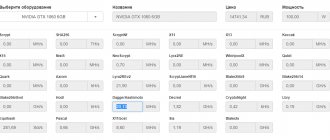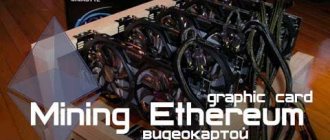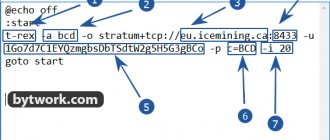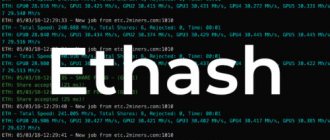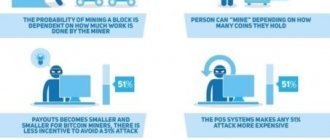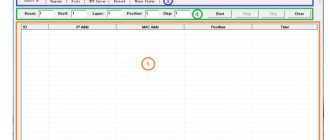The X16R algorithm has attracted incredible attention from miners, becoming a kind of stronghold of GPU mining. While ASICs are taking over one algorithm after another, pushing even the most powerful video card farms out of the cryptocurrency mining industry, the X16R provided absolutely unique opportunities.
This is one of the most modern algorithms, which was originally intended only for GPU mining. Simply put, it was created in such a way as to exclude the appearance of ASICs. Moreover, the number of coins on the algorithm is regularly replenished, although not all of them become significant and truly successful. However, many experts predict great success not only for the X16R algorithm, but also for the very idea that it brought to the field of cryptocurrency mining.
History of appearance
The developers of the algorithm were impressed by the initial appearance and success of Bitcoin, which became the locomotive of the entire mining phenomenon. However, when the obvious increase in capacity switched the attention of miners from video cards to specialized devices for mining cryptocurrency - ASICs, this area changed dramatically. Top companies began to fight for any popular “altcoins”, trying to release even more powerful and less power-consuming ASICs.
This caused damage to the entire industry, since the very idea of mining - decentralization - was at risk. When most of the power is concentrated around the largest market players, the centralization of cryptocurrency mining has become a very real threat. The X16R algorithm appeared precisely as an attempt to return the once-inherent decentralization, under the motto “cryptocurrency mining only for video cards.”
At launch, X16R and the Ravencoin coin (which became the “testing ground” for the technology) were subject to a lot of criticism. However, this did not prevent the cryptocurrency from becoming the flagship of the algorithm and showing its advantages. Today, the total capitalization of RVN is more than $27 million. Although this is far from a top result, it is worth taking into account the “ASIC resistance” and the general concept of the coin.
Structure and operating principle
The emergence of X-algorithms was the next stage in the development of cryptocurrencies. Initially, X11 appeared, after which X13, X15 and X17 were added to it. What makes them special is that they use X (depends on the number) number of hashing algorithms. The fact is that a fixed number of algorithms allows you to create ASICs and, in fact, makes the task easier for manufacturers. The X16R works differently, which makes it different from other X's. The main difference is that the hash order is constantly changing.
This greatly complicates the task of creating ASICs, up to the complete impossibility of releasing them, since it is necessary to take into account all the dynamic changes in hashing algorithms.
The X16R chain consists of 16 hashing algorithms that operate on the chain in an order that depends on the 8 bytes (16 nibble) block of the previous hash. The general list of algorithms for the X16R is as follows:
- 0=blake
- 1=BMW
- 2=groestl
- 3=jh
- 4=keccak
- 5=skein
- 6=luffa
- 7=cubehash
- 8=shavite
- 9=simd
- A=echo
- B=hamsi
- C=fugue
- D=shabal
- E=whirlpool
- F=sha512
Every 16 nibbles will determine which algorithm will come next.
The main attention of the mining community to X16R is manifested not so much in the Ravencoin coin itself, but in the possibility of creating “ASIC resistance”. The technology is easy to implement on any other algorithms, from Equihash to Scrypt and others.
Therefore, with the advent of technology, which was successfully tested and confirmed by the work of RVN, simple conclusions can be drawn - for many popular coins it is simply unprofitable to get rid of ASICs, which provide the main capitalization and profit. And given the fact that profitability is the main goal of creating cryptocurrencies, this plays into the hands of increasing centralization.
Algorithm X16R
X16R is a Proof of Work hashing algorithm developed by and for Ravencoin. The hashing algorithm used in the X16R is the same 15 algorithms used in the X15 + SHA512 model. Except that the x16r rotates randomly using 16 different algorithms; hence the name R, which stands for Random, Rotating or Ravencoin.
The 16 algorithms that make up the X16R are as follows:
Blake, BMW, Groestl, JH, Keccak, Skein, Luffa, Cubehash, Shavite, Simd, Echo, Hamsi, Fugue, Shabal, Whirlpool and SHA512
This algorithm works in such a way that it constantly breaks the order of the chain of algorithms. The order of the 16 different hashing algorithms will change dynamically depending on the hash value of the previous block. Due to the dynamic reordering of the algorithm, creating an ASIC for the X16R is difficult.
However, the fact is that no PoW algorithm (not even X16R) can block ASICs forever. As the economic value of mining increases and more coins adopt the same algorithm, ASIC development will accelerate. In any case, the Ravencoin developers have committed to changing the algorithms used in x16r if they ever discover an ASIC in development.
X16R Whitepaper: https://ravencoin.org/assets/documents/X16R-Whitepaper.pdf
X16R miners:
There are several X16R miners available for NVIDIA and AMD cards. All mining programs from different developers. Some of them are open source with 0% commission. Some, on the other hand, are closed source and include a small fee for the developers. We won't list them all here, as there are only a few programs that are constantly updated and work better. There are also no open source miners that work anywhere close to closed source miners. For this reason, we will only share popular closed source miners.
Below are some of the fastest miners you can use to mine Ravencoin and other coins based on the X16R hashing algorithm.
NVIDIA:
Latest version of T-Rex Miner (closed source with 1% developer fee)
Latest version of Enemy Miner (closed source with 1% developer fee)
AMD:
Latest version of WildRig Multi (closed source with 2% developer fee)
Avermore Miner (Open Source)
The above programs are considered to be some of the most effective mining programs currently available. The hashrates are quite stable, the software is more stable, maintains a stable hashrate, and on top of that they are friendly to your GPU.
Now, before you start mining, there are a few things you need to note about the X16R. Since this algorithm constantly switches between 16 different algorithms, it puts a strain on your GPU and PSU. Make sure you have enough free space on your power supply and start by limiting the power between 70% and 85%. Also, this algorithm is extremely sensitive to overclocking, so try not to overclock it. Use the default settings for core and memory frequencies at first, then gradually increase until you find a stable setting.
Now that you have learned enough about X16R, let's look at the list of coins based on this algorithm.
Potential Cons of X16R and Ravencoin
Despite all the attractiveness of the X16R and many advantages, the algorithm also has its disadvantages. First of all, they relate to the technology itself. If you create a general list of shortcomings, it is worth highlighting:
- The hashrate on the X16R is highly dependent on miners (when comparing different miners, performance can vary by up to 50%).
- Careful configuration is required, which is not always available to ordinary users and beginners.
- The complexity of benchmarks due to changing hashing algorithms.
- Performance is highly dependent on the operating system (same reason as the previous point).
Simply put, the main disadvantages are tied to the technology itself, so solving them may take a long time or even become impossible. However, many of the X16R's shortcomings were successfully eliminated. This demonstrates the amount of work being done, the potential of the algorithm and the continued faith and passion of its creators.
For example, at first X16R was not available for AMD cards, although today all major miners allow you to mine RVN on cards from this manufacturer. It is especially profitable for AMD to dig into the X16R from the Vega line. There were no such problems with NVidia running on the X16R initially, although the performance of video cards was highly dependent on the settings and the miner.
A definite disadvantage is the situation when the farm periodically freezes. Also earlier about one of the cards after the error appeared. To fix this, I had to reboot the entire rig. However, the latest versions of miners have solved most of the problems.
A conditional disadvantage, although this feature will be a plus in some cases, is the minimization of the influence of overclocking. Taking into account changing algorithms, overclocking provides almost no increase in profits. This applies to both memory and kernel. It makes no sense to talk about the CPU, because the RVN processor was used to mine cryptocurrencies at the very beginning and this stage is long in the past.
WHATTONEWS
The famous cryptocurrency Ravencoin has seen a huge surge in its hashrate in recent weeks, doubling in just a few days. The reason for this was the release of a new series of ASICs for mining using the Ravencoin PoW X16R algorithm.
Please share this material
